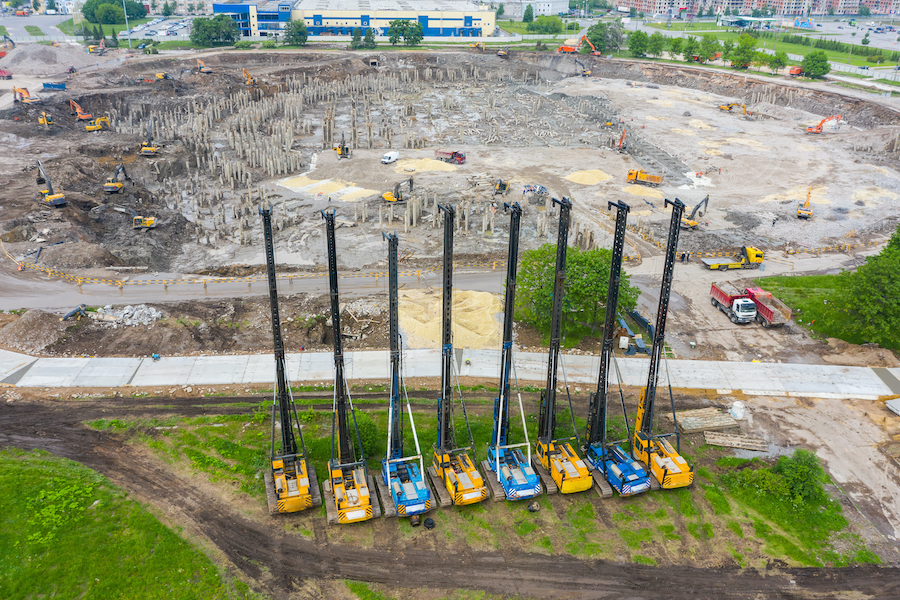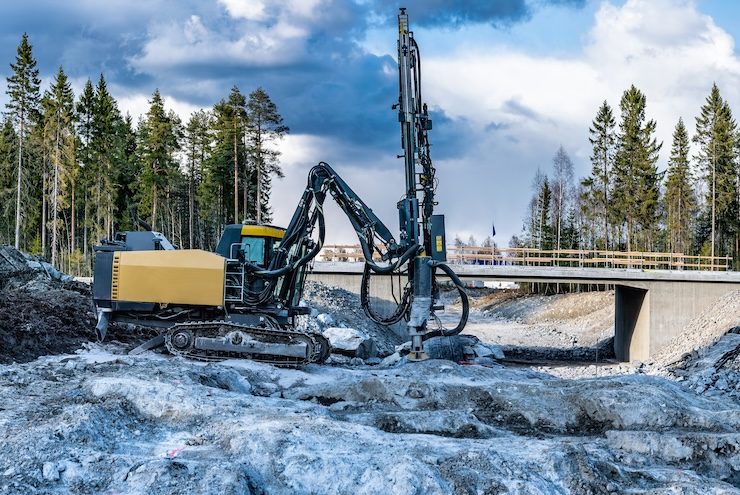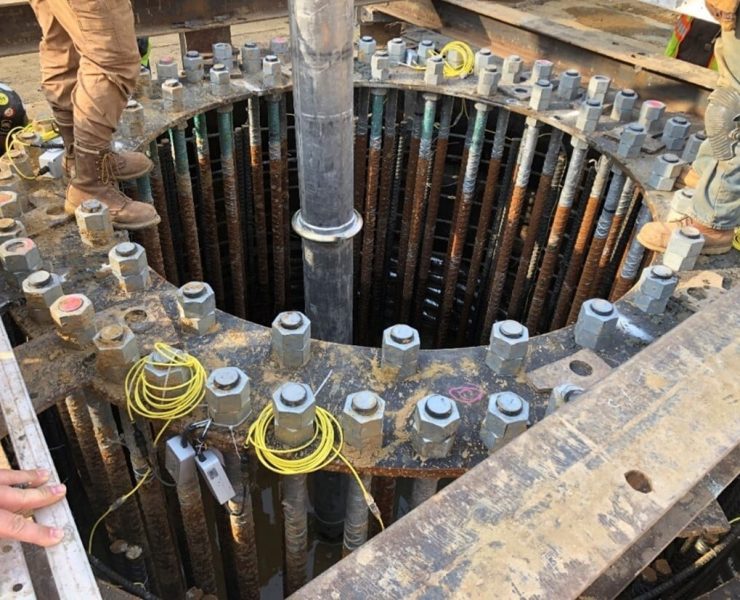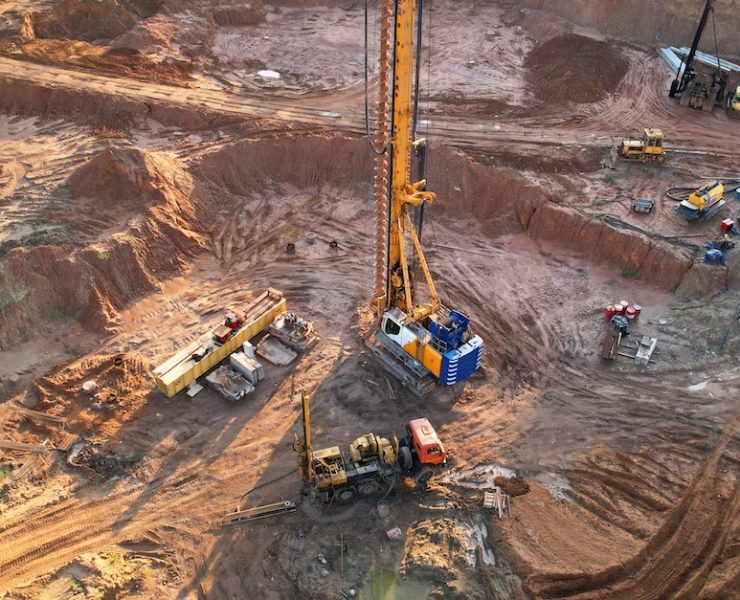Atypical Construction Sites: Building on Sanitary Landfill, Man-Made Fills, and Unusual Soils


There are situations where structures are built upon something other than naturally occurring soil. It is possible to build over a sanitary landfill, for example. City neighborhoods have been built upon man-made fills. There are other unusual soils that present challenges to construction, such as chemically reactive or lateritic soils. It is the job of the project engineering team to determine if it’s appropriate – or even possible – to build on these atypical construction sites.
Construction Over Sanitary Landfills
Spring Creek Towers, formerly Starrett City, in New York is an example of building structures on top of a sanitary landfill. It is the largest government-subsidized rental housing complex in the United States. The 153-acre urban community was built on a landfill in the 1970s. It is comprised of 46 buildings and 5,881 rental units that about 15,000 residents call home.
Composition of Material
The engineering properties of sanitary landfill are largely influenced by the composition of the refuse.
Settlement Characteristics
Subsidence of Refuse Fill Under Self-weight
The following mechanisms can lead to surface subsidence:
- Movement of particles into large voids.
- Biological decomposition of organics.
- Chemical reactions, including oxidation and combustion.
- Dissolving of soluble substances by percolating groundwater or leachate.
- Change in deformation properties with time.
- Plastic flow or creep.
The time-settlement relationship of subsidence under self-weight is analogous to the secondary compression of soils after a short period of pseudo-primary settlement. Also referred to as mechanical settlement, the process typically takes one to four months. Measurements indicate a coefficient of secondary compression ranging from 0.1 to 0.4. Settlement of the fill under its own weight after completion can be estimated.
Subsidence of Refuse Fills under External Loads
The time-settlement behavior of old refuse fills under an applied load is similar to the behavior of peat. Primary settlements will likely occur as the load is applied. Secondary compression occurs over a long period of time and the amount of long-term settlement is determined by environmental conditions (i.e. humid environment is more conducive to decomposition) as well as the composition of the refuse. Higher compressibility is usually associated with high organic content and/or advanced degree of decomposition.
Foundation Investigation
Any foundation investigation for a structure being built over a sanitary landfill should include the evaluation of the following potential problems:
- Differential settlement of floor slabs, walls, and utilities.
- Irregular subsidence due to highly variable composition.
- Corrosion of concrete foundations and pipe utilities.
- Generation of methane gas.
- Slope stability.
- Effect of construction on leachate control.
Methods of Treatment for Foundation Support
There are several ways to support a foundation built upon a sanitary landfill including:
- Control and compaction during placement. Compaction and shredding of refuse as it is being placed in the landfill will greatly increase its suitability for later use.
- Proof rolling of fills and replacement of soft pockets with compacted soil will reduce irregular settlements.
- Use of surcharge fills where refuse is thick.
- Deep foundations founded below the refuse fills. If piles are used, provisions must be made for the corrosive environment and possible damage during driving, as well as re-sealing any holes created in leachate cutoffs.
- Grouting of refuse fills to stabilize voids.
- Use of flexible connections for utilities.
Information about how landfills work can be found on the Environmental Protection Agency (EPA) website. (https://www.epa.gov/landfills/basic-information-about-landfills)
Man-Made Fill
Man-made fills have made it possible to create land in areas where available construction sites are scarce. The Back Bay neighborhood of Boston, Massachusetts is an excellent example. It took fifty years to fill in the area with gravel from other parts of the state. The Great Fire of 1872 destroyed 776 buildings in Boston. The rubble from the fire was also used to fill in the bay. The project was completed in 1882.
Suitable Fill Materials
Suitable fill materials of the Unified Soil Classification System include GW, GM, GC, GP, SW, SP, SM, SC, and CL soils. Compaction beneath structures to 92% of optimum density for cohesive fill or 95% for cohesion-less fill using ASTM Standard Test Methods D 1557 has proved highly successful.
Unsuitable Fill Material
Unspecified fills placed randomly with poor compaction control can settle significantly and provide unsuitable foundation soil. Fills should usually be engineered granular, cohesive materials of low plasticity index < 12 and liquid limit < 35.
Composition and Density
Composition and density are the main concerns with man-made fill. If the fill is shown to be detrimental to the performance of the foundation, bypassing with deep foundations, or removal and replacement are in order. Other characteristics of man-made fill include:
- High void ratio.
- Uniform gradation but variable grain size within same fill.
- High liquefaction potential.
- Lateral spreading.
- Easily eroded.
Unusual Soils
Unusual soils have characteristics that can make the construction site difficult to prepare for building. In some cases, they are simply unsuitable. Or, the preparation may be too costly. Here we discuss three types of unusual soils.
Chemically Reactive Soils
For foundation construction, the main concerns usually are corrosion and gas generation. Corrosion potential is determined in terms of pH, resistivity, stray current activity, groundwater position, chemical analysis, etc. A compatible foundation treatment, e.g., sulfate resistant concrete, lacquers, creosote, cathodic protection, etc., is prescribed. For gas concentration, organic matter content and field-testing for gas are performed. If gas generation is expected, some form of venting system is designed. The potential presence of noxious or explosive gases should be considered during the construction excavations and tunneling.
Lateritic Soils
Lateritic soils are found in tropical climates throughout the world, usually where tropical rain forest and savannas are located. Typical characteristics include:
- Loss of soil strength with time.
- High void ratio and permeability.
- Aggregate deterioration.
- Variable moisture content.
- Shrinkage cracks.
Lateritic soil easily compacts. Its shear is somewhere between sand and silt. It is landslide prone as its depth of wetting affects slope stability.
Submarine Soils
Submarine soils are found in continental shelf deposits at water depths up to several hundred feet in places such as submarine canyons, turbidity flow, deltaic deposits, and abyssal plain. Distribution and physical properties of sand, silt, and clay may change with time and local geologic conditions.
Shelf deposits have few unique characteristics requiring modification of soil mechanics principals. Local areas, such as the Gulf of Mexico, have weak, under consolidated deposits. Deep sea calcareous deposits have water contents up to 100% and shear strengths up to about 220 psf. Deep-sea silty clays have average water contents of 100-200% and shear strength of 35- 75 psf. Finally, deep-sea deposits are normally consolidated but near shelf deposits may be under consolidated.
Opportunity Awaits
Builders have known for a long time that there are construction opportunities beyond the standard land lot. With hard work and ingenuity – and some smart engineers – you can create buildable land from fill material. Unusual soil can present challenges but can be handled with treatment and proper planning. Even garbage can be turned into gold by building upon a sanitary landfill.
Is it possible to build structures on sanitary landfills, and what are the key considerations for such construction?
Yes, it is possible, as exemplified by Spring Creek Towers in New York, but key considerations include settlement characteristics, foundation investigation, and methods of treatment for foundation support to address potential issues like corrosion and methane gas generation.
How are man-made fills utilized in construction, and what characteristics should be considered for suitable fill materials?
Man-made fills, as seen in Boston's Back Bay, create land where construction sites are scarce; suitable fill materials, determined by composition and density, must meet specific criteria, while poor compaction control can lead to settling and unsuitable foundation soil.

















